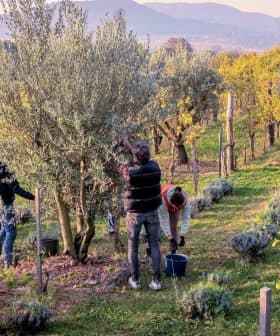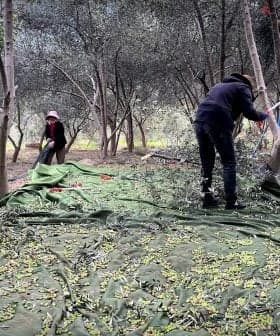Olive Varietals: Some Interesting Peculiarities
There are over 2,000 catalogued olive varietals in the world, with almost 400 grown in Spain, including Picual, Hojiblanca, and Cornicabra which cover over half of the olive grove surface. The cultivation of olive trees results in genetically identical or extremely similar plants of the same varietal, with new varietals being created over thousands of years through a combination of human and natural processes.

Although the majority of people are barely aware of a few, the fact is that there are over 2,000 catalogued olive varietals in the world. Of these, almost 400 are grown in Spain, although just three occupy over half of our olive grove surface: Picual, Hojiblanca and Cornicabra.
All animals, plants and other living beings are scientifically classified according to their Trunk, Class, Order, Family, Sex and Species. This logical order makes the study of the phenomenon of life under the evolution criteria possible.
Since it is not our intention to analyse the matter, on this occasion we will limit ourselves to simply reminding you that Olea Europaea L. is the Latin name that the Botanic field has assigned to the olive tree.
We all know that these trees can also be catalogued into various different sub-categories, including Arbequina, Cornicabra or Gordal, among many others. But, in what way are they different? The answer lies in the type of varietal they represent. This concept is only applied to the cultivated plants which, pertaining to one same species, present a series of permanent characteristics of their own which are passed down from generation to generation which make their cultivation more interesting than that of wild plants. It’s as simple as that.
The case of the olive tree
At present, myriad varietals are known to us, some more modern and some more abandoned. Some species, such as the vine or the rose, are represented by close to 10,000, a far higher figure than the 2,000 known olive varietals. Yet, contrary to what occurs with other plants, the cultivated olives express a very interesting genetic characteristic that transforms all those of the same varietal into practical clones. Thus, all of them are genetically identical or, at least, extremely similar. This is due to the fact that back in their day they spread vegetatively, that is, via a branch or similar method that ended up setting down roots.
In Spain, we have around 400 different registered varietals which, according to their importance are classified into majority, secondary and minority. There is a limited number of the majority varietals, but they predominate in the crops. Their production levels tend to be very high and this means they are the farmers’ favourites. They are represented by the Picual, the Cornicabra and the Hojiblanca, which as a whole cover one million hectares, or in other words, over half of our olive groves.
For their part, the secondary varietals are also important, although they are less represented. Finally, the minority varietals are those which, as a whole, also have a certain degree of importance and although they are cultivated in local areas, they are limited and in some cases about to disappear.
The origin of the varietals
In the beginning, primitive men observed that certain wild olive trees produced more olives than others and that these, in turn, provided a larger quantity of oil. Logically, these cultivars were more and more appealing for use in agriculture, which is why they soon spread throughout other lands as new waves of migration were triggered.
In their new homes, these olive trees were pollinated by other wild cultivars that were autochthonous to the various areas, and the fruit germinated gave rise to new wild olive trees leading to the appearance of many new varietals in a sort of game of chance driven by man and nature. That is how, for thousands of years, new varietals were created.
An average modern-day consumer is capable of reeling off numerous grape types, such as Garnacha, Tempranillo, Syrah, Cabernet Sauvignon, Albariño… Yet, that same consumer barely knows any olive varietals at all. Maximum, they might have vaguely heard of Picual, Hojiblanca or Arbequina, but not much more. They do not know that each and every one of the production areas in our country grow one or more representative varietals, that produce oils with such an exclusive personality that it can surprise us.
Over the coming editions, we will continue to analyse this facet of the olive tree and discover the most cultivated varietals in Spain, its oils and the types of table olives.









